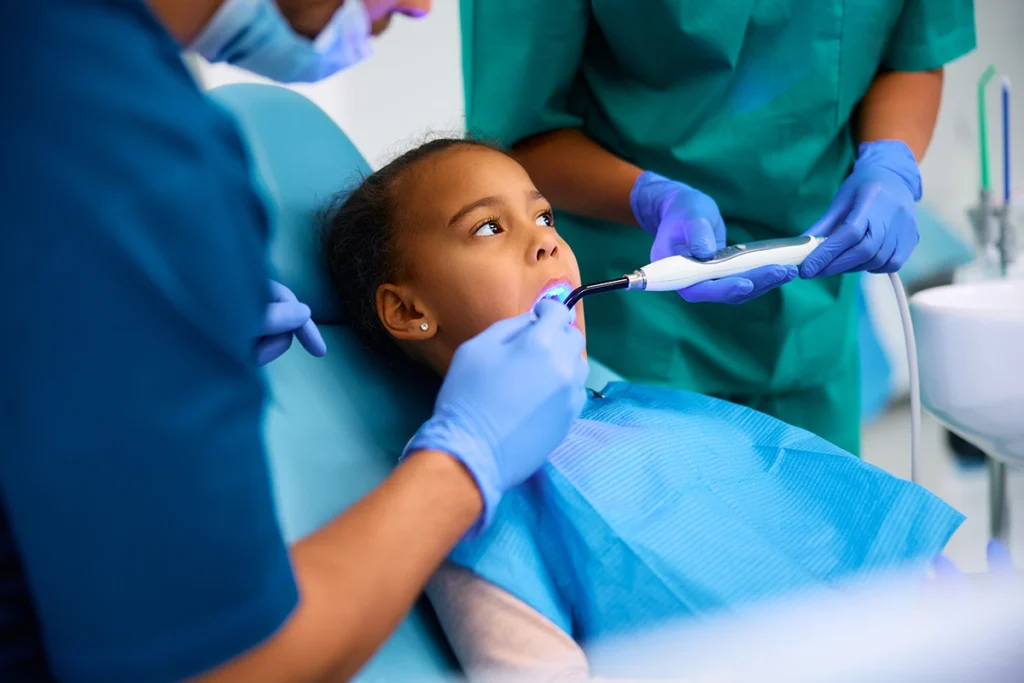When New Teeth Arrive the American Academy of Pediatric Dentistry Recommends...
Children should visit the dentist by their first birthday. As soon as teeth are visible, it is appropriate to brush them twice each day using a soft, age-appropriate toothbrush and a small amount of fluoridated toothpaste (the size of an uncooked grain of rice), as this would be safe if swallowed and it provides the teeth with the necessary fluoride to prevent cavities and mineralize the teeth. It is important that your child’s newly-erupted teeth (erupting at six to 12 months of age) receive proper dental care and benefit from proper oral hygiene habits right from the beginning.
During this time, your child’s gums may feel tender and sore. To help alleviate this discomfort, we recommend that you soothe the gums by rubbing a clean finger or a cool, wet cloth across them. You may also choose to make use of a teething ring. It is not recommended to use Orajel or other topical anesthetic agents for children under two years of age.
Adopting Healthy Oral Hygiene Habits
As your child’s teeth erupt, be sure to examine them every two weeks, looking for lines and discoloration that may be caused by decay. Remember that sugary foods and liquids can attack a new tooth, so take care that your child brushes his or her teeth after feeding or eating. We recommend brushing two times a day for optimal oral hygiene.
Preventing tooth decay with regular checkups
Tooth decay is caused by sugars left in your mouth that turn into an acid, which can break down your teeth. Children are at high risk for tooth decay for a simple reason: many children and adolescents do not practice regular, good oral hygiene habits. Proper brushing and flossing routines combined with regular dental visits help keep tooth decay away.
Your child should visit the dentist every six months for regular dental cleanings and checkups. We recommend fluoride treatments twice a year along with cleanings to keep teeth their strongest. Tooth sealants are also recommended because they “seal” the deep grooves in your child’s teeth, preventing decay from forming in these hard-to-reach areas. Sealants last for several years, but will be monitored at your child’s regular checkups.
Brushing can be fun, and your child should brush as soon as the first tooth arrives. When a baby’s tooth erupts, parents should brush the tooth with a soft-bristled toothbrush and a pea-sized amount of toothpaste. For children younger than two, do not use fluoride toothpaste unless advised to do so by your dentist or other healthcare professional. We suggest reviewing proper tooth brushing procedures with your child.

Flossing is also a part of good oral hygiene habits, and your dentist will discuss with you the right time to start flossing your child’s teeth. If you notice signs of decay, contact your dentist immediately.
Breastfeeding Difficulty?
Does your child have difficulty breastfeeding due to a tongue or lip tie? Has your child ever been checked for a lip or tongue tie? Both can contribute to difficulty with breastfeeding, speech, and oral cleansing. Ask our board certified pediatric dentists about a tongue or lip tie correction with our state-of-the-art laser.
